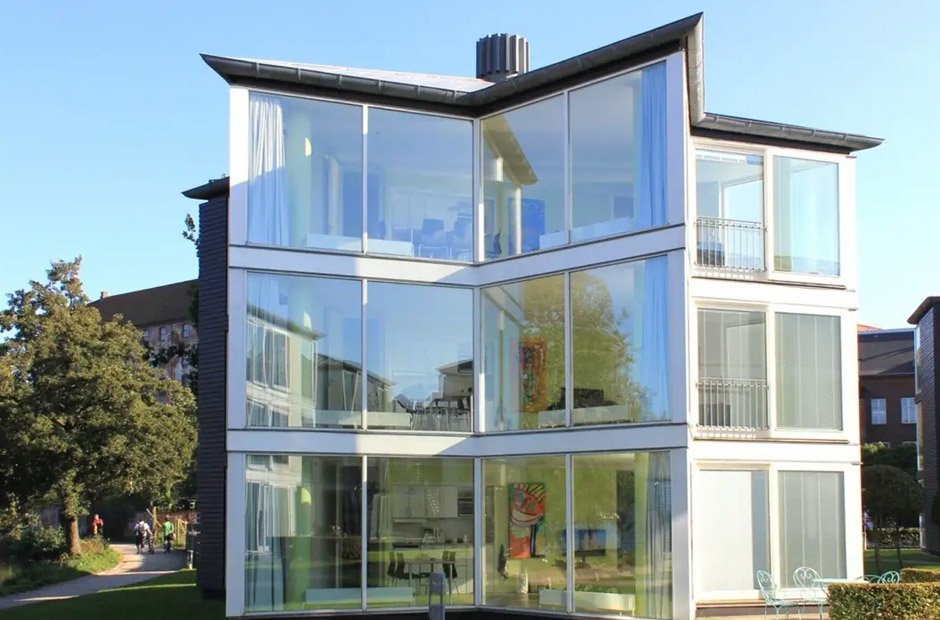Key Takeaways
- Glass enhances natural daylight, reducing both energy usage and the need for artificial lighting.
- Structural glass elements, such as stairs and floors, promote a sense of openness and modernity.
- New glass technologies boost sustainability, energy efficiency, and architectural creativity.
Glass has established itself as a key feature in modern architecture, valued for its versatility, elegance, and capacity to connect indoor spaces with the outdoors. Whether through large windows, glass walls, or partitions, using glass allows abundant natural light to fill interiors, fostering a sense of openness and enhancing the building’s visual appeal. Architects are increasingly experimenting with textures, tints, and structural glass elements to achieve both functional and artistic goals, making spaces feel larger, brighter, and more dynamic.
Innovative applications of glass go beyond windows and doors, including skylights, balustrades, and even flooring. Working with experienced suppliers like kennedyglass.com ensures that these creative ideas are executed safely and efficiently, with high-quality materials tailored to design needs. Thoughtful use of glass can transform ordinary structures into visually striking, modern architectural statements.
Maximizing Natural Light with Glass
One of the primary benefits of glass in architecture is its ability to allow natural light to penetrate deeply into a building’s interiors. Large windows, skylights, and transparent walls brighten up spaces, positively impacting occupant mood and health while decreasing dependence on electric lighting. For example, the Kilden Performing Arts Centre in Norway effectively utilizes glass, allowing daylight to enter the interior and seamlessly unite it with breathtaking views of the fjords. This dramatic play of light and shadow transforms mundane rooms into vibrant, inviting environments.
The thoughtful use of glass not only improves the quality of indoor light but also establishes connections to nature. Whether in corporate headquarters, educational settings, or homes, glass elements can enhance well-being and even boost productivity.
Structural Glass Elements
Modern architecture increasingly incorporates glass as a structural element, thanks to improvements in its strength and processing. It appears in staircases, floors, and bridges, creating futuristic environments that maximize natural light and make interior spaces feel more spacious. For example, the Apple Store in New York showcases this with its glass exterior and transparent staircase, symbolizing openness and innovation beyond traditional materials. Glass is versatile in both commercial and residential buildings, with laminating and tempering techniques ensuring safety and durability. This trend continues to push the boundaries of architecture and inspire new global applications.
Energy-Efficient Glass Technologies
Today’s architectural glass is more than just attractive—it’s also highly functional. Thermochromic and electrochromic smart glass solutions adjust their tint in response to sunlight and temperature, minimizing heat gain in the summer and reducing heat loss in the winter. These technologies slash HVAC costs while providing a comfortable, glare-free environment for occupants. Researchers have found that the widespread adoption of smart glass could significantly reduce energy costs across diverse climate zones.
Other advances include low-emissivity (Low-E) coatings, which reflect infrared light and improve insulation. By integrating energy-smart glass, modern buildings can contribute to global sustainability while offering striking, light-filled interiors.
Glass Facades and Curtain Walls
Glass curtain walls are a hallmark of contemporary skylines, often featured in high-rise towers and innovative public buildings. These sleek, expansive glass exteriors create luminous indoor spaces and help control thermal gain. Curtain walls maximize natural light, offer panoramic views, and give buildings a clean, modern profile that contrasts with traditional stone or concrete facades.
In addition to boosting daylight, curtain walls can be combined with high-performance coatings and integrated shading systems to improve energy efficiency. Their durability, flexibility, and striking visual appeal make them essential elements of sustainable design in the 21st century.
Innovative Glass Applications
Modern architects consistently explore new ways to express creativity with glass. Features such as glass bridges, canopies, and domes are now defining features in prominent public spaces and private residences alike. The historic Glass Pavilion by Bruno Taut, for example, showcased the wide-ranging possibilities of prismatic and colored glass as early as 1914. Today’s designers build on this legacy, experimenting with forms, patterns, and interactive facades to craft distinctive, memorable landmarks.
Safety and Durability Considerations
Architectural glass must strike a balance between beauty and resilience. Laminated glass consists of layers bonded for extra safety. In contrast, tempered glass is heat-treated for strength and shatter resistance—making both ideal for areas exposed to impact or high foot traffic. These modern solutions ensure that glass floors, facades, and railings meet rigorous safety standards, providing long-lasting performance in any climate or context.
Conclusion
Glass continues to serve as a transformative material in modern architecture, breaking barriers between the indoors and outdoors while advancing energy efficiency and sustainability. By embracing glass in creative, functional ways—from innovative structural elements to groundbreaking facades—architects can design environments that are vibrant, adaptable, and truly inspiring.



